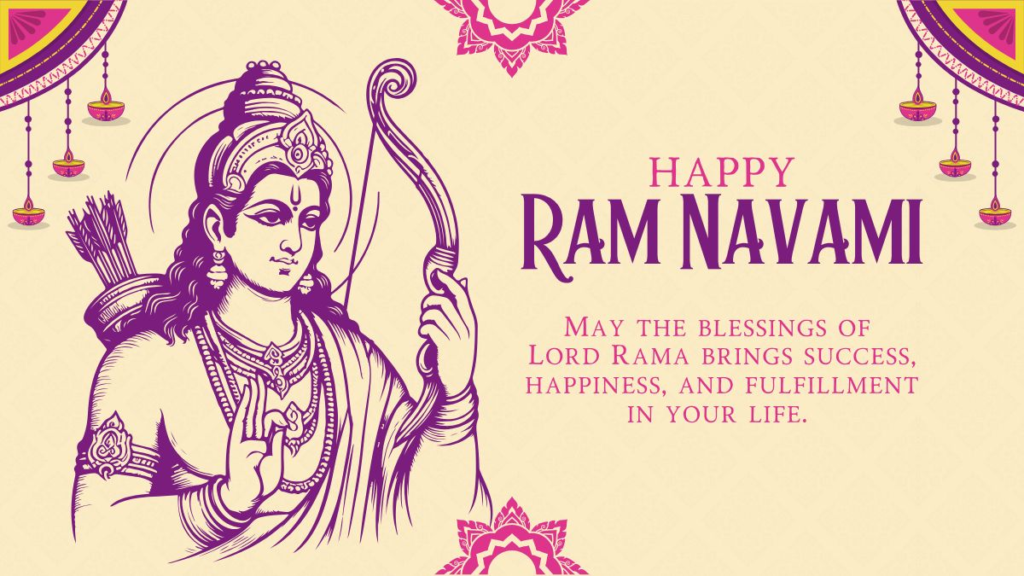
Table of Contents
- Introduction
- The Spiritual Significance of Ram Navami
- North India: Grand Processions and Temples Ablaze with Devotion
- South India: Kalyanotsavam and the Art of Bhakti
- Eastern India: Chanting, Chariot Festivals, and Peaceful Devotion
- Western India: Traditions That Echo Through Time
- Common Rituals Across India
- Modern-Day Celebrations and Digital Devotion
- Conclusion: One Festival, Many Shades of Reverence
1. Introduction
Ram Navami isn’t just a festival—it’s a feeling that flows like a sacred river through the veins of India. Celebrated as the birth anniversary of Lord Rama, the seventh incarnation of Lord Vishnu, this day unites millions across the country in a symphony of devotion, music, color, and culture. But how it’s celebrated differs beautifully from region to region. Let’s journey across India to witness the many ways Ram Navami comes alive.
2. The Spiritual Significance of Ram Navami
Ram Navami falls on the ninth day of Chaitra month (March–April) and marks the end of Chaitra Navratri. Lord Rama, born in Ayodhya to King Dasharatha and Queen Kaushalya, is revered not just as a deity but as an ideal—of virtue, duty, and righteousness. For many, Ram Navami is a day to reflect, to celebrate dharma, and to seek inner peace through divine remembrance.
3. North India: Grand Processions and Temples Ablaze with Devotion
In Uttar Pradesh, particularly in Ayodhya, the atmosphere is electrifying. Thousands gather on the ghats of the Sarayu River for a sacred dip, followed by Ram Janmotsav, where the divine birth is enacted with bhajans, dramatic plays (Ramlila), and spirited chanting.
Temples in Varanasi, Delhi, and Mathura resonate with the sound of conches, bells, and mantras. The idols of Lord Rama, Sita, Lakshman, and Hanuman are decorated with fresh flowers, placed in cradles, and swung gently to mark His birth.
4. South India: Kalyanotsavam and the Art of Bhakti
In Andhra Pradesh and Telangana, Ram Navami is marked by the Sita-Rama Kalyanam, a ceremonial wedding of Lord Rama and Sita. This divine marriage is performed in grand temples like Bhadrachalam, where lakhs gather to witness the sacred ritual, believing it brings prosperity and harmony in their own relationships.
In Tamil Nadu and Karnataka, devotees perform Ram Taraka Mantra japam, distribute panakam (a jaggery drink) and kosambari (a lentil salad), and read from the Ramayana, filling homes and temples with the music of devotion.
5. Eastern India: Chanting, Chariot Festivals, and Peaceful Devotion
In Odisha, Ram Navami coincides with Rath Yatra-like processions in some places, with beautifully decorated chariots carrying Lord Rama’s idol.
In West Bengal and Assam, although Durga Puja dominates the festive landscape, Ram Navami still finds a quiet, respectful place in the calendar. Here, the focus is more on recitations of Ramayana, fasting, and temple prayers, especially in Vaishnavite communities.
6. Western India: Traditions That Echo Through Time
In Maharashtra and Gujarat, the day starts with a spiritual bath and fast, followed by reading the Ramcharitmanas or Tulsi Ramayana. Many also host kirtans and bhajan gatherings in homes and temples.
In Gujarat, devotional songs ring through Swaminarayan temples, where Ram Navami and Swaminarayan Jayanti are celebrated on the same day. The focus is on dharma, seva, and collective joy.
7. Common Rituals Across India
While regional flavors add uniqueness, some rituals echo across the nation:
- Fasting from sunrise to sunset, broken only with prasad.
- Reading the Ramayana, especially the Bal Kand or Ayodhya Kand.
- Temple visits and offerings of tulsi leaves, flowers, and fruits.
- Cultural performances like Ramlila and bhajan sandhyas.
- Distribution of panakam and prasadam to devotees and the poor.
8. Modern-Day Celebrations and Digital Devotion
With the digital age in full bloom, many now join Ram Navami celebrations online. Live streams of temple events from Ayodhya, Bhadrachalam, and other sacred spots draw viewers from across the world.
Social media becomes a platform for sharing slokas, stories, and spiritual messages, while many families organize virtual satsangs and storytelling sessions for children to connect with their roots.
9. Conclusion: One Festival, Many Shades of Reverence
Ram Navami is more than a date on the calendar—it’s a mirror of India’s diversity and devotion. Whether it’s the grandeur of processions in Ayodhya, the soulful marriage rituals in Bhadrachalam, or the quiet reading of scriptures in Bengal, the essence remains the same: honoring Lord Rama and embracing His virtues.
In every temple bell that rings, in every verse recited, and in every heart that remembers Him, Ram Navami continues to live and inspire.

